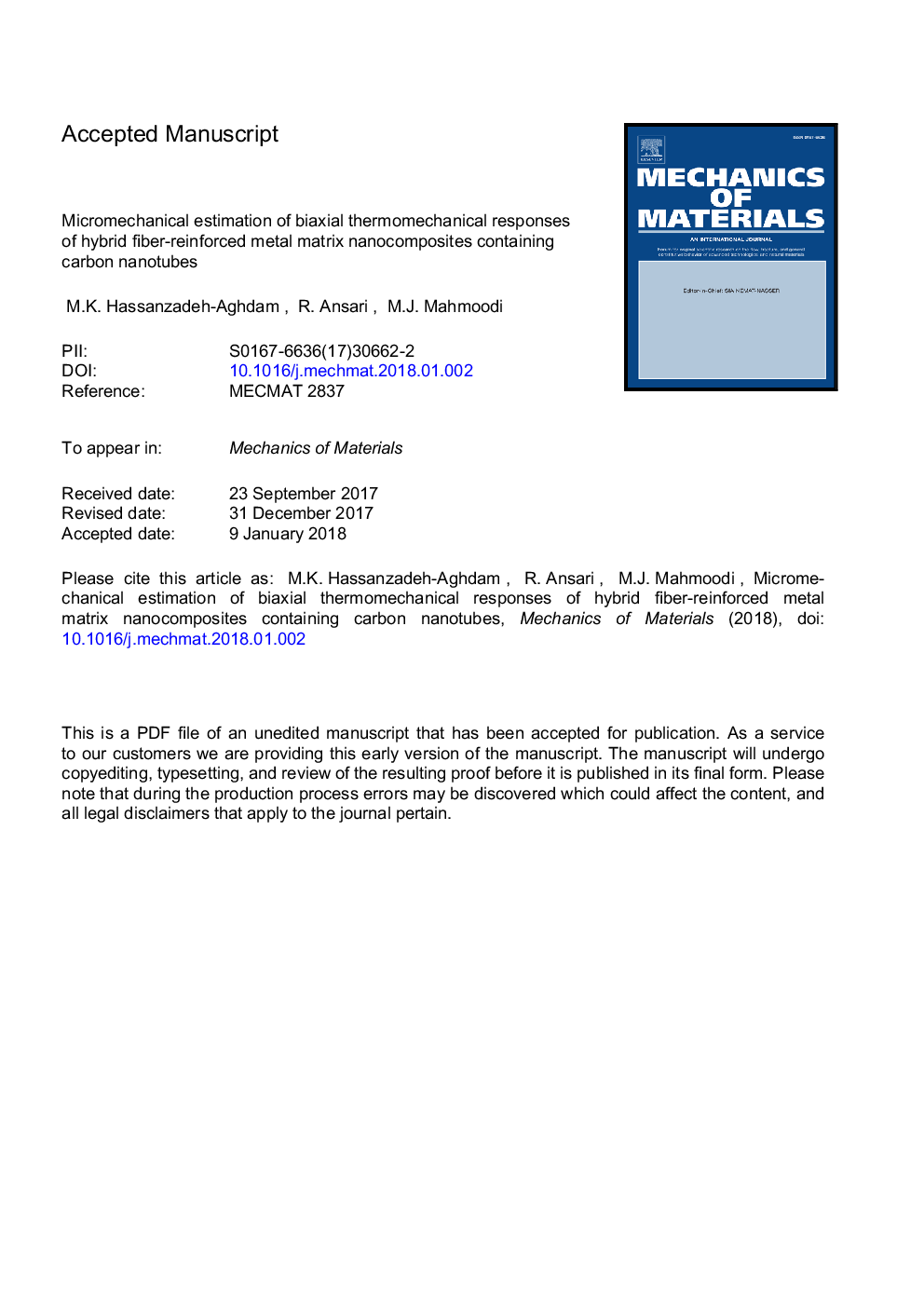| Article ID | Journal | Published Year | Pages | File Type |
|---|---|---|---|---|
| 7178530 | Mechanics of Materials | 2018 | 52 Pages |
Abstract
A new approach combining three models is developed to evaluate the thermomechanical behavior of carbon nanotube-fiber reinforced metal matrix nanocomposites (CNT-FRMMCs). At first, the shear lag and Schapery models are modified to determine the mechanical and thermal characteristics of CNT-reinforced metal matrix, respectively. Then, the transverse elastic moduli and transverse/transverse biaxial initial yield envelope of CNT-FRMMCs are predicted using the simplified unit cell (SUC) micromechanical model together with a proper representative volume element (RVE) with râ¯Ãâ¯c sub-cells. The effect of the mismatch in coefficients of thermal expansion (CTEs) between the constituents of the hybrid composite is considered. The results obviously reveal that both thermoelastic properties and initial yield surface of FRMMCs can be significantly improved with adding CNTs. The influences of volume fraction, geometrical and material properties of CNTs, fiber volume fraction, fibers arrangement type, temperature change and residual stresses (RSs) on the CNT-FRMMCs mechanical properties are explored extensively. It is observed that (i) increasing both CNT volume fraction and length and (ii) decreasing the CNT diameter can lead to a more improvement in the thermomechanical behavior of CNT-FRMMCs. The results show that adding CNTs into the FRMMCs can reduce the effect of thermal RSs on the biaxial initial yield envelope.
Related Topics
Physical Sciences and Engineering
Engineering
Mechanical Engineering
Authors
M.K. Hassanzadeh-Aghdam, R. Ansari, M.J. Mahmoodi,
